|
Medicina(BO) and Noto(SR) radiotelescopes
29 august - 3 september 2006

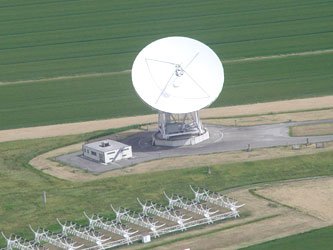 The Smart-1 spacecraft is the first
European mission to conduct an observational scientific program about
the moon. It was lunched on 27 September 2003 from the European
spaceport in French (Guyane). It was captured by the moon gravity in
November 2003 and it will end its voyage on 3 September 2006 when
hitting the lunar surface. The Smart-1 spacecraft is the first
European mission to conduct an observational scientific program about
the moon. It was lunched on 27 September 2003 from the European
spaceport in French (Guyane). It was captured by the moon gravity in
November 2003 and it will end its voyage on 3 September 2006 when
hitting the lunar surface.
Some Italian radioastronomers will perform an innovative experiment
related to Smart-1
on 29-30-31 August 2006. By virtue of sincronous observations
made by the Medicina (near Bologna)
radiotelescope and the Noto (near Siracusa)
radiotelescope, key measurements will be conducted to confirm the
presence of a tiny ionosphere extending into space up to about 50 km.
On 3 September 2006 the Smart-1 spacecraft will end its
mission by crashing on lunar surface. Although ESA planned as carefully
as possible for the impact to occurr at 5:40 UT on 3 September, there
is some chance that the probe might crash earlier or later by an amount
of up to two orbits, i.e by 10 hours earlier or later than scheduled.
The Italian team may thus have a chance to see the crash from Noto only
that would be otherwise impossible to see at 5:40 UT because the moon
will be below the horizon. If luck will let see the crash at the water
maser frequency of 22 GHz, they will be able to confirm whether there
was water on the moon at the impact site.
The final goal of this experiment is to determine the radial density,
the refraction index, and other data of the tiny lunar ionosphere. All
these data will in turn by pivotal for the future construction of a
radiotelescope inside crater Daedalus that is the most shielded crater
(in the middle of the moon farside) from the terrible radio noise
produced by the expanding human civilization on Earth.
The Italian team is made up by Salvatore
Pluchino (P.I.), Francesco Schillirò, Claudio Maccone, Luca Derosa, Christian M. Firrone.

Contacts
P.I. Salvatore Pluchino (salvo.pluchino@tin.it) +39 333
3396372

Smart-1
experiment live !
Monday august 28th 2006
The team works on hardware-software system at VLBI after last calculus
tests were performed. Last details are defined. The Smart-1 signal, at
the beginning, does not seem to be in the expected region of the sky.
Thursday august 29th 2006
The SMART-1 S-band signal
captured by Medicina radiotelescope!
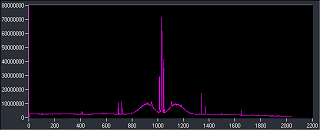
The
tests will continue waiting for the next occultation.
Wednesday august 30th 2006
After a heavy work morning, the observations begin at 15:00 UT. Smart-1
spacecraft looms up on the screen with two beautiful lateral lobes.
Radioastronomers win the fight against coordinates.
The work will not stop.
Thursday 31 august
2006
The observations start at 12:15 U.T.
Smart-1 signal looms up on the screen since the first hours of the
evening, displaying its presence on 2,2 GHz band frequency. During the
experiment, Noto and Medicina radioastronomers follow Smart-1
successfully, despite of its high speed.
The experiment goes on...
Friday september 1st,
2006
Medicina and Noto radiotelescopes continue to get new records from the
spacecraft.
Waiting for the impact becomes spasmodic.
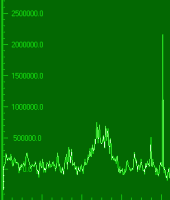
Saturday
september 2nd , 2006
News from here.
Today Smart-1 will not generate lunar radio occultations visible from
Italy.
After instruments calibration and scheduling Noto observation, the last
part of the experiment begins at 18:00 U.T.
Expecting new data. The crash is
approaching...
Sunday september
3rd , 2006
The impact has come.
Smart-1 spacecraft fell in “Excellence lake” at 05:42 U.T,
30° below the horizon, hiding to our eyes.
However, data recorded in "total power" are hundreds and hundreds Gigas
of disc memory. Only the analysis will show us if the predictions about
the existence of a lunar ionosphere was correct.
The work starts now...

Links
http://www.esa.int/esaCP/SEMJSBZ7QQE_Italy_0.html
http://www.esa.int/SPECIALS/SMART-1/index.html

Thanks
ing.
Stelio Montebugnoli, dott.ssa Simona Righini, ing. Beppe Maccaferri,
ing. Francesco Schillirò

|


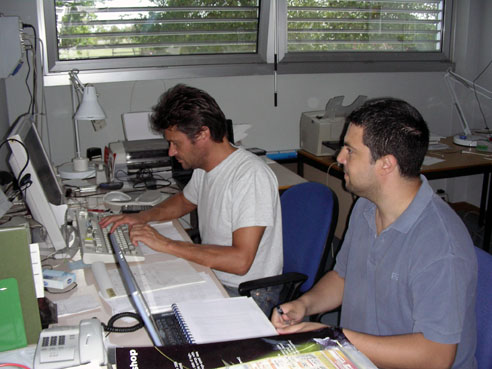

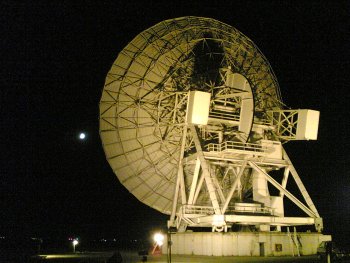


 The
The